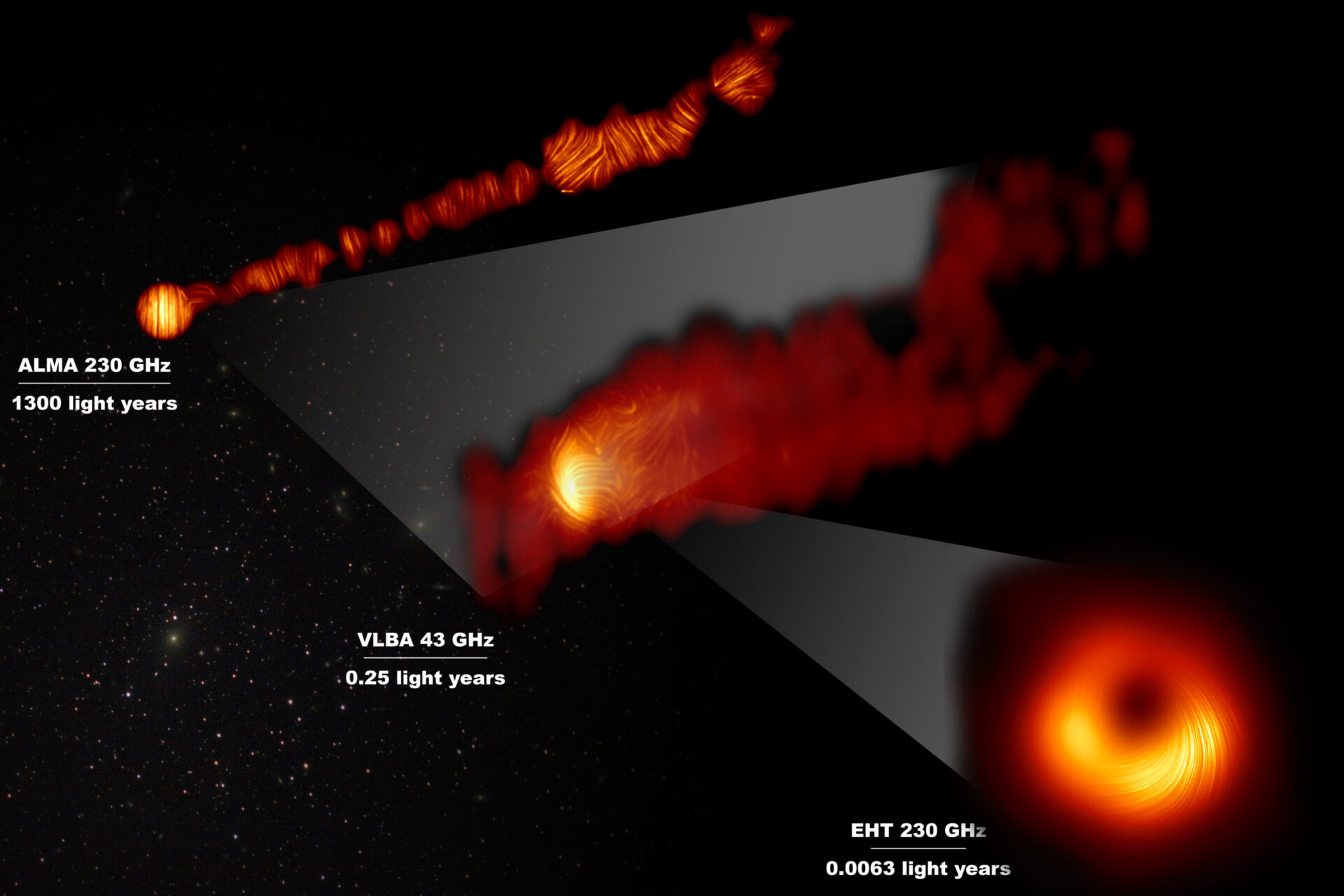View of the M87 supermassive black hole and jet in polarised lig
This composite image shows three views of the central region of the Messier 87 (M87) galaxy in polarised light. The galaxy has a supermassive black hole at its centre and is famous for its jets, that extend far beyond the galaxy. One of the polarised-light images, obtained with the Chile-based Atacama Large Millimeter/submillimeter Array (ALMA), in which ESO is a partner, shows part of the jet in polarised light. This image captures the part of the jet, with a size of 6000 light years, closer to the centre of the galaxy. The other polarised light images zoom in closer to the supermassive black hole: the middle view covers a region about one light year in size and was obtained with the National Radio Astronomy Observatory’s Very Long Baseline Array (VLBA) in the US. The most zoomed-in view was obtained by linking eight telescopes around the world to create a virtual Earth-sized telescope, the Event Horizon Telescope or EHT. This allows astronomers to see very close to the supermassive black hole, into the region where the jets are launched. The lines mark the orientation of polarisation, which is related to the magnetic field in the regions imaged.The ALMA data provides a description of the magnetic field structure along the jet. Therefore the combined information from the EHT and ALMA allows astronomers to investigate the role of magnetic fields from the vicinity of the event horizon (as probed with the EHT on light-day scales) to far beyond the M87 galaxy along its powerful jets (as probed with ALMA on scales of thousand of light-years). The values in GHz refer to the frequencies of light at which the different observations were made. The horizontal lines show the scale (in light years) of each of the individual images. Credit: EHT Collaboration; ALMA (ESO/NAOJ/NRAO), Goddi et al.; VLBA (NRAO), Kravchenko et al.; J. C. Algaba, I. Martí-Vidal
